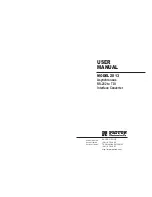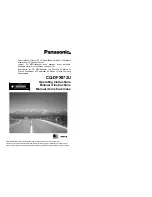
21
CHAPTER 4. Installation
NOTE
The ground connection is not needed.
Host
First Slave
Other Slave(s)
XMT+ - - - - - - - - - - - - - - - RCV+ - - - - - - - - - - - - - - - RCV+
XMT- - - - - - - - - - - - - - - - - RCV- - - - - - - - - - - - - - - - - RCV-
RCV+ - - - - - - - - - - - - - - - XMT+ - - - - - - - - - - - - - - - XMT+
RCV- - - - - - - - - - - - - - - - - XMT- - - - - - - - - - - - - - - - - XMT-
Figure 4-6. Daisychain Wiring for Converter Host and Slaves.
NOTE
This unit can be configured for line termination. If
termination is required, a resistor will have to be externally
connected.
4.3 Connection to the RS-232 Interface
Once you have properly configured the Converter and
connected the twisted-pair wires correctly, simply plug
the Converter directly into the DB25 port of the RS-232
DTE device. Remember to insert and tighten the two
captive connector screws.
NOTE
If you must use a cable to connect the Converter to the
RS-232 device, make sure it is a straight-through cable of
the shortest possible length—we recommend 6-ft. (1.8-m)
or less. If you are connecting it to a DCE device (such as a
modem or a mux), a cross-over (null modem) cable is
required. See Appendix A for pinning of a null modem
cable.





































